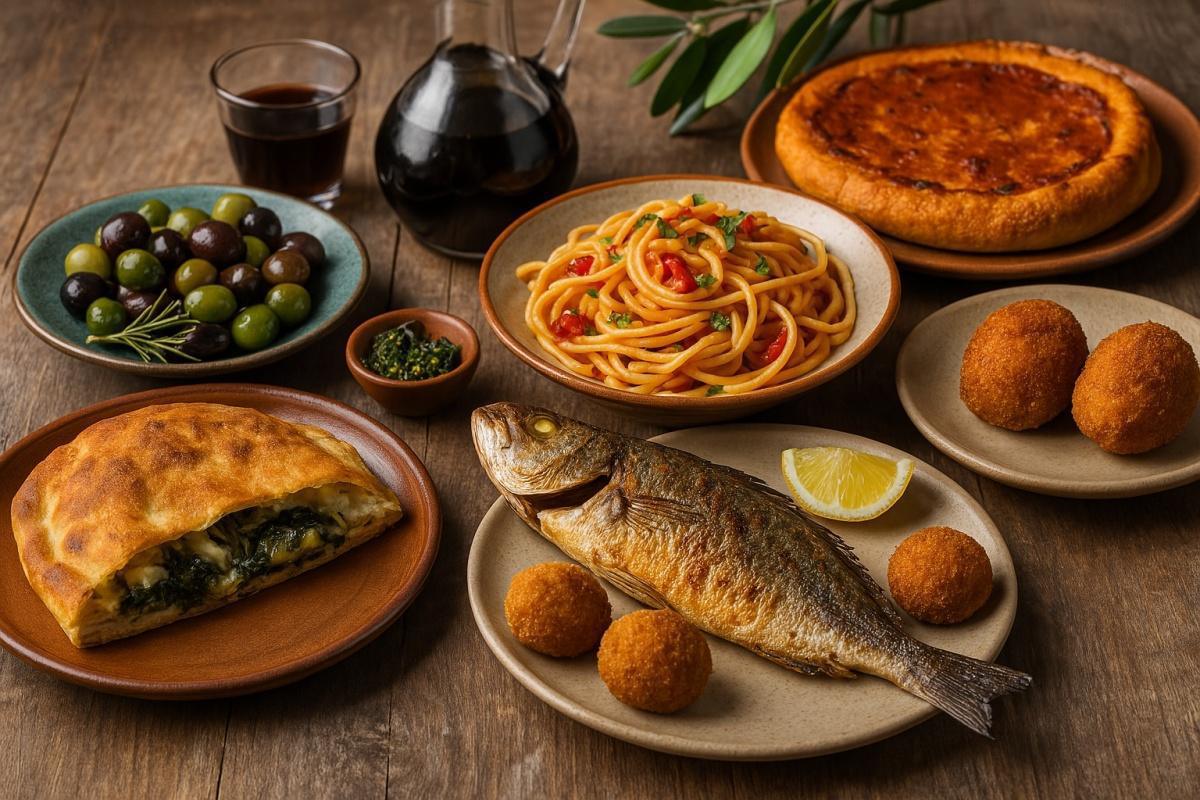The traditional cuisine of Calabria’s Grecanic Area is a true gastronomic treasure, reflecting the history, identity, and memory of a community deeply rooted in its Greek origins. Nestled between the Aspromonte mountains and the Ionian Sea, this region has preserved ancient flavors, artisanal techniques, and a genuine bond with the land.
Bread and simplicity: Lestopitta
A symbol of Grecanic cooking is the lestopitta, an unleavened flatbread made with flour and water, then quickly fried in olive oil. Crispy on the outside and soft inside, it resembles Greek pita and is typically served warm, stuffed with local cold cuts, cheeses, or wild greens.
Cheese of identity: Musulupa
Among the dairy products stands out the Musulupa, a soft, unsalted fresh cheese traditionally made with a mix of sheep and goat milk. It is shaped in carved wooden molds and especially enjoyed during Easter, often accompanying festive meals. It’s a jewel of local cheesemaking.
Territorial first courses: Maccheroni with goat ragù
Homemade pasta is another cornerstone. The best-known is maccheroni with goat ragù (maccarruni cu sucu da crapa), made with a special iron rod that gives it a long, hollow shape. The rich goat meat sauce gives the dish a bold and rustic flavor.
Meats, cured products, and pastoral memory
Goat meat features in many traditional dishes, such as capra alla vutana, slowly cooked with Mediterranean herbs, tomatoes, and onions. Among the cured meats, the Magulà Grecanico, a delicately seasoned pork cheek, stands out for its flavor and craftsmanship.
Ancient wines from ancient soils
The sunny hills of the area produce robust, aromatic wines. The Palizzi IGT is a full-bodied red, ideal with meats and cheeses. The Greco di Bianco DOC, a sweet wine of Greek origin, pairs well with desserts and aged cheeses.
Festive sweets: Petrali and 'Nghute
At Christmas, locals prepare petrali, cookies filled with dried figs, walnuts, almonds, and spices. For Easter, the tradition includes baking ‘nghute, sweet dough rings decorated with hard-boiled eggs—symbols of rebirth and celebration.
The cuisine of the Grecanic Area is more than food: it’s story, ritual, and identity. Every dish is a reflection of land, time, and tradition—a cultural legacy still alive in every bite.



